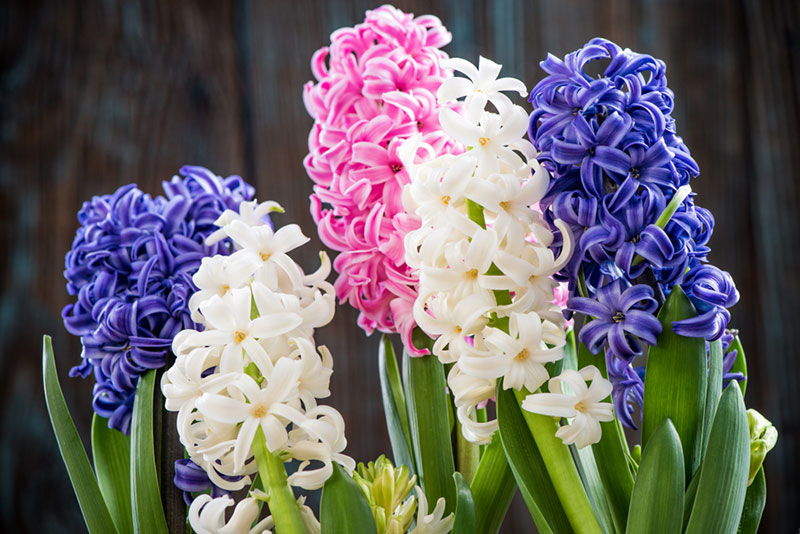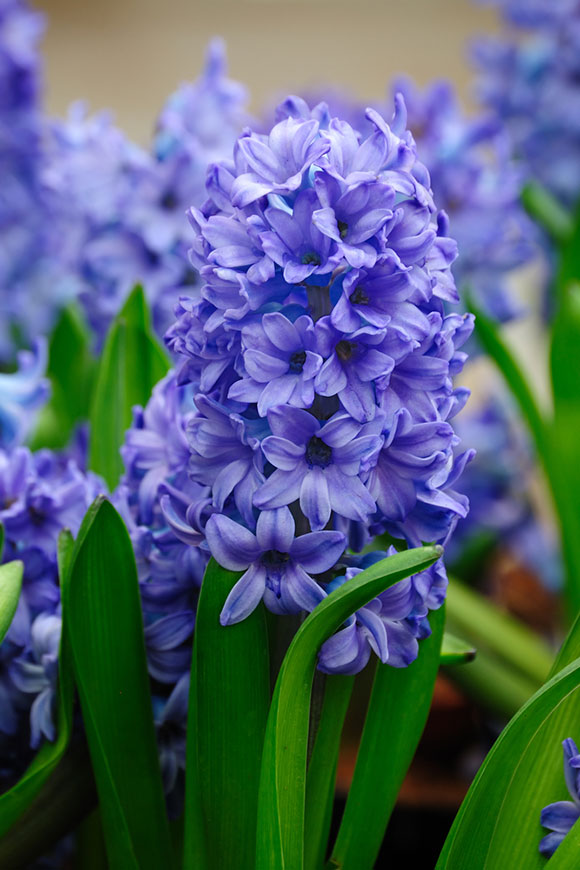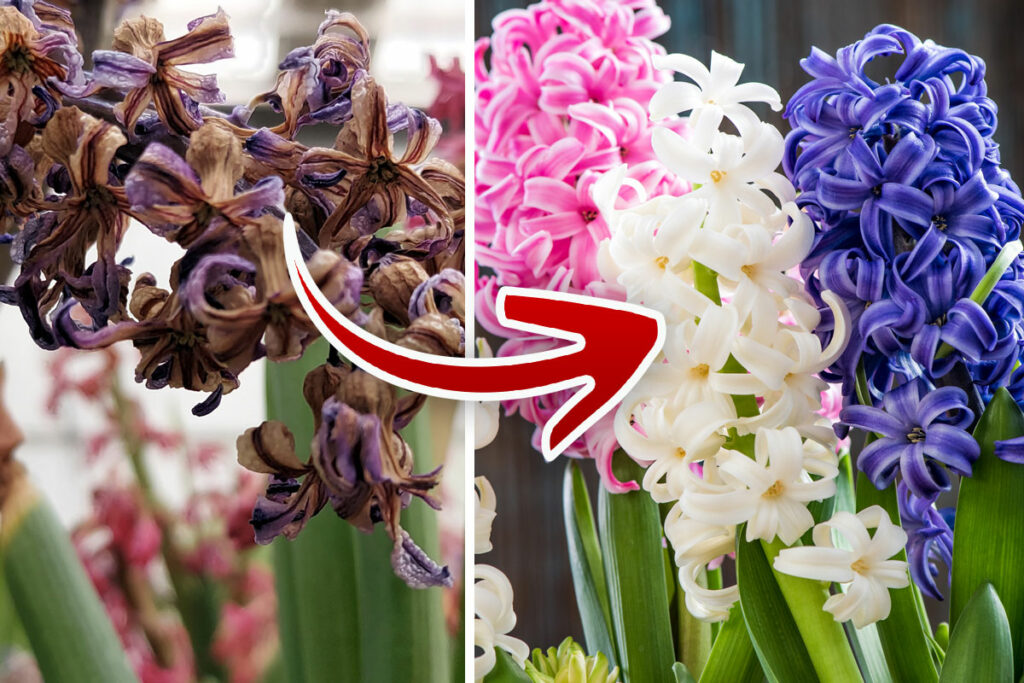
Hyacinth plants produce beautiful flowers that are highly fragrant. They bloom in the springtime and come in white, pink, red, purple and blue.
They are hardy in zones four through eight. Many people like to mix these bulbs in with other spring bulbs to give a spring garden some variety with their tall spikes.
Some of the taller varieties have flower spikes that flop over, and these can be either staked for stability or planted close together to provide mutual support.
Hyacinth bulbs will generally live for about three to four years.
Light and Temperature Requirements
Hyacinth plants can grow in both partial shade and full sunlight. Like many other types of bulbs that bloom in the spring, they will bloom and then go dormant early in the season, so deciduous trees won’t have their full leaves yet. This allows you to plant them in areas that would be shady during other times of the year.
The plants should get a minimum of between six and eight hours of full sunlight every day.
In zones four through eight, they will generally survive the coldest temperatures of the winter. If they are plants in zones outside of these, they may need to be given protection from the temperatures that are too hot or too cold. If temperatures will be higher than 60 in the winter, it’s best to dig them up and place them in a cool, dark place for anywhere from six to 10 weeks.
Watering
After you have planted hyacinth bulbs, water the ground thoroughly. If the area does not get regular rain during the winter, keep watering the bulbs. However, don’t water them too often. If there is too much water on the bulbs, they can rot in the cold ground. Allow the soil to get dry in between waterings. If you aren’t planting the hyacinth in the ground or in a container, some types of hyacinth bulbs can grow directly from a vase of water without any soil added. This works best when a special vase is used that is made for keeping the bulb just above the water while the roots delve into it.
Soil and Fertilizing
The pH of the soil is not that important to hyacinth plants. The soil should be loose and should have excellent drainage. If the soil is too wet, the plant will not survive. If the soil is particularly rich, the flower stalks of the hyacinth can grow in floppy. Don’t add any organic matter to the soil unless your soil is extremely poor. When you first plant your bulbs, you can put some bulb food with it in the hole. You can also feed the bulb with bone meal. The only other time that it may benefit from fertilizer is the next spring when the first growth of the year appears. When this happens, bury some bulb food near the bulbs.

Deadheading and Pruning
After the hyacinth plant has bloomed, cut away the stalks that held the flowers, but leave the rest of the foliage intact. This will push the plant to store some of its energy in the plant’s bulb. Deadheading also makes the plants look better after they have finished blooming. You can prune the rest of the plant down to the soil level in the fall, but don’t do so until the leaves turn yellow.
Propagation
To propagate hyacinths, plant hyacinth bulbs. In the late summer, remove the bulbs from the ground. There will be small pieces forming along the bulb edges- remove them. Then, replant the original bulbs as well as the small pieces that had formed. For those, it will be a few years before they mature and bloom. It may be a good idea to do this every year, as the bulbs themselves decline quickly and don’t live for more than a few years.
Toxicity
Every part of the hyacinth plant is poisonous. The part that is the most toxic is the bulb, and this is the part that you will likely be handling. Be careful when you handle hyacinth bulbs, and wear gloves when you pull up and plant the bulbs. The rest of the plant is also toxic, however, so don’t forget gloves if you are going to be handling the flowers or foliage. If you notice any symptoms like abdominal pain, vomiting or changes in your heart rate, you may have come into contact with the toxic chemical inside the hyacinth plant and need to seek medical care right away.






